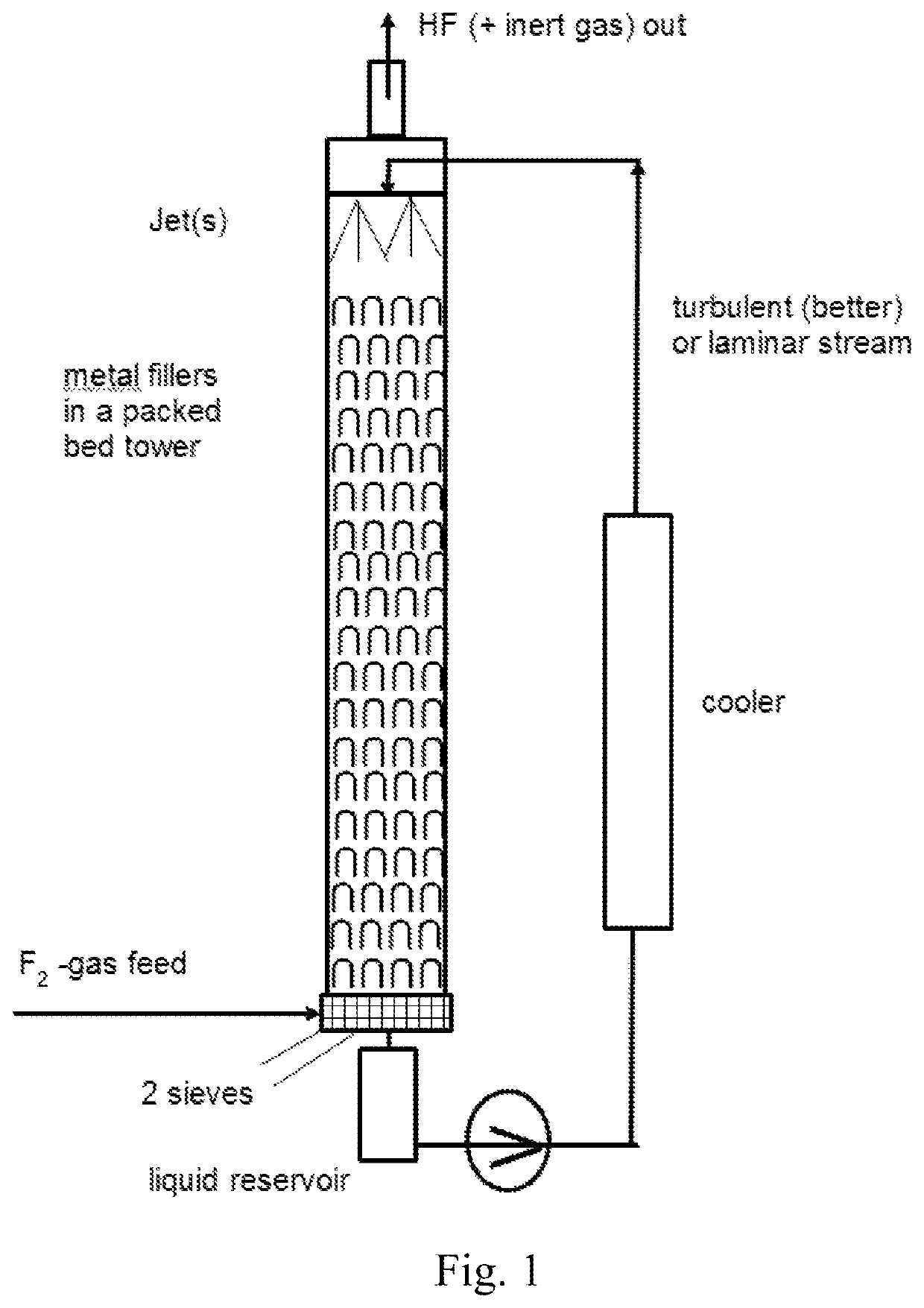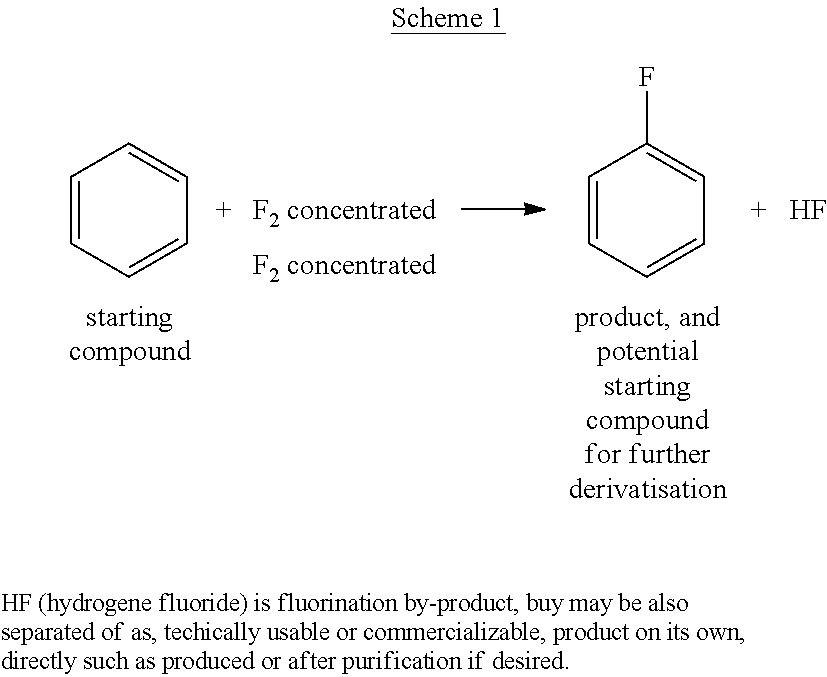Process for preparing fluorobenzene by direct fluorination
a technology of direct fluorination and fluorobenzene, which is applied in the preparation of carboxylic compounds, electrochemical generators, organic chemistry, etc., can solve the problems of reduced heat transfer, unsolved problems, and inability to meet the requirements of scalability and environmental friendliness, so as to reduce the number of separation steps, simplify the process, and avoid time and energy consumption.
- Summary
- Abstract
- Description
- Claims
- Application Information
AI Technical Summary
Benefits of technology
Problems solved by technology
Method used
Image
Examples
example 1
[0179]Synthesis of Fluorobenzene in a Counter-Current System
[0180]In a batch fluorination counter-current apparatus made out of Hastelloy C4 and having a pressure valve at the top which is set to 5 bar (to let out some HF and inert gases like CF4 from electrolysis cell) and with a total volume of 10 l (see FIG. 1), 4.0 kg (51.2 mol, 4.5 l) of benzene were filled and the pump was started. For the cooling a water cooler with a water temperature of 8° C. was used. When the temperature of the benzene reached 15° C., the feeding valve of reservoir with concentrated F2 was opened with a dosage of 20 mol F2 gas / h. For this trial, the F2-gas had a concentration of 97% / h. Some purge gas leaves the apparatus together with slightly overdosed F2. In total, 51.7 mol (1.96 kg) F2 gas (97% concentration from electrolysis cell) was fed over 160 minutes over a mass flow controller from Bronkhorst into the looping reaction mixture. Reaction samples were taken very carefully with a stainless steel cyl...
example 2
[0181]Synthesis of Fluorobenzene in a Microreactor System with High Concentrated F2-Gas
[0182]In a microreactor apparatus system, as given with FIG. 2, comprising two 27 ml microreactors from Chemtrix, 3.01 mol / h highly concentrated F2-gas from F2-production electrolysis (over a Bronkhorst flow meter) was fed together with 3 mol / h benzene out of a storage reservoir (tank), both microreactors were kept at a temperature of about 60° C. and the pressure valve after the second microreactor was set to 5 bar. The second microreactor in series was foreseen just to extend residence time and to have a better temperature and pressure control of the reaction. The product material leaving the microreactor apparatus system, comprising the produced fluorobenzene, was collected in a stainless steel cylinder. Workup was done by feeding the product mixture, comprising the produced fluorobenzene, into ice water to remove the by-product HF. After phase separation a fine distillation delivered fluoroben...
example 3
[0183]Synthesis of Fluorobenzene in a Microreactor System with Diluted F2-Gas
[0184]In a microreactor apparatus system, as given with FIG. 2, comprising two 27 ml microreactors from Chemtrix, 3.01 mol / h F2-gas (20% F2 content in 80% N2, each % by volume) from a stainless steel cylinder (over a Bronkhorst flow meter) was fed together with 3 mol / h benzene into a storage reservoir (tank), both microreactors were again kept at 60° C. and a pressure of 5 bar. The second microreactor in series was foreseen just to extend residence time and to have a better temperature and pressure control of the reaction. The product material sporadically or unsteadily leaving the microreactor (liquid phase mixed with gas phase), comprising the produced fluorobenzene, was collected in a stainless steel cylinder. Workup was done by feeding the product mixture, comprising the produced fluorobenzene, into ice water to remove the by-product HF. After phase separation a fine distillation delivered fluorobenzene...
PUM
| Property | Measurement | Unit |
|---|---|---|
| pressure | aaaaa | aaaaa |
| temperature | aaaaa | aaaaa |
| temperature | aaaaa | aaaaa |
Abstract
Description
Claims
Application Information
 Login to View More
Login to View More - R&D
- Intellectual Property
- Life Sciences
- Materials
- Tech Scout
- Unparalleled Data Quality
- Higher Quality Content
- 60% Fewer Hallucinations
Browse by: Latest US Patents, China's latest patents, Technical Efficacy Thesaurus, Application Domain, Technology Topic, Popular Technical Reports.
© 2025 PatSnap. All rights reserved.Legal|Privacy policy|Modern Slavery Act Transparency Statement|Sitemap|About US| Contact US: help@patsnap.com



